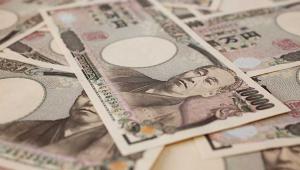ls-japanese-yen-iStock_000014514535.jpg

Japanese Yen. ©iStock
The value of the nation’s currency has been declining since March, after the state bank stood by its yield curve control policy, which limits 10-year government bonds to 0.25%, despite global inflation causing rates to rise.
The yen-to-US-dollar rate fell to 128 today its weakest performance since 2002, with the government aware to the risks of a faltering currency.
According to news agency Al Jazeera, finance minister Shunichi Suzuki told parliament yesterday: “Stability is important and sharp currency moves are undesirable.
“Weak yen has its merit, but demerit is greater under the current situation where crude oil and raw materials costs are surging globally, while the weak yen boosts import prices, hurting consumers and firms that are unable to pass on costs.”
However, Suzuki decline to how the government and the Bank of Japan should respond to the yen’s weakening, including any interventions.
Experts were split on whether the deprecating currency would call the central bank or government into action, as yen to dollar rates are expected to breach 130 this year.
Guillaume Derrien, economist at financial firm BNP Paribas, said earlier this month: “The sharp depreciation of the yen leaves the BoJ less manoeuvring room to pursue its yield curve control policy.
“Some adjustments in its policy are expected.
“Economic support – both monetary and fiscal – will be maintained in 2022 in an environment that is especially tough for Japanese industrial companies, hard hit by global supply chain disruptions and the economic slowdown in China.
Meanwhile, economists at financial firm ING said that they expect the BoJ to maintain its yield curve control policy, despite future interest rate rises in the US forecast.
Francesco Pesole, foreign exchange strategist and Chris Turner, global head of markets at the firm said: “A front-loaded Fed tightening cycle, a dovish BoJ and a deteriorating Japanese balance of payments position on the back of the fossil fuel spike will keep USD/JPY big for most of the year – and it should be nearing 130 by year-end.
“Probably the biggest risk to that view is that the BoJ becomes less dovish – as evidenced by it allowing 10-year JGB yields to trade above 0.25%.
“That is not what we forecast.”
Earlier this month, US Federal Reserve governor Lael Brainard said the bank will rapidly reduce its balance sheet and hike interest rates in the coming months to tame inflation which hit 7.9% in February.
Last month, the central bank raised interest rates by 0.25 percentage points, the first increase to borrowing rates since 2018.













